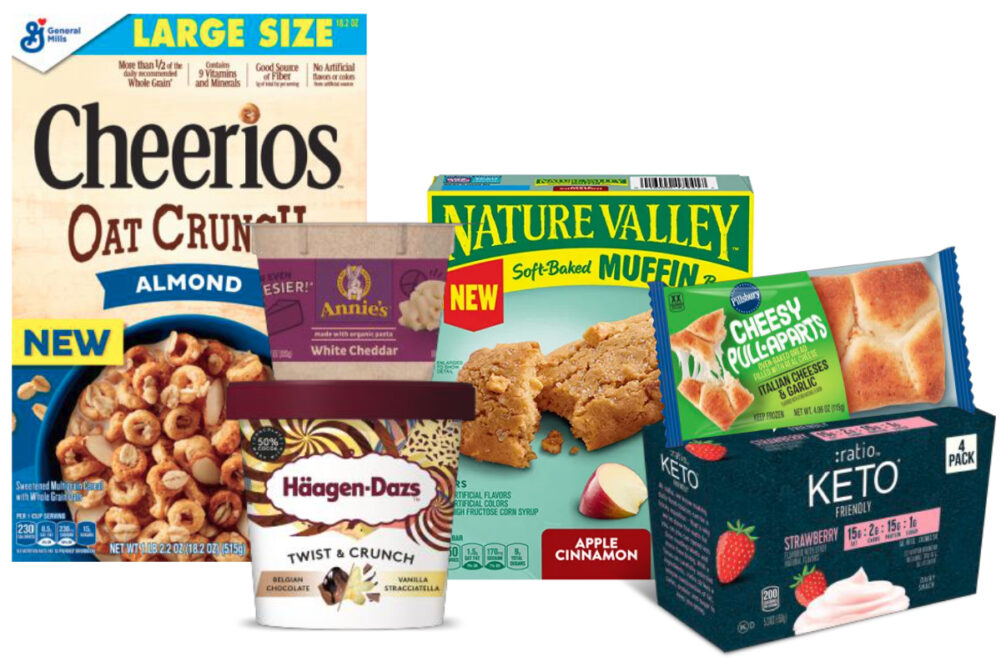MINNEAPOLIS – General Mills, Inc. has entered a period of uncertainty. As markets around the world reopen, company management waits to see how consumer purchasing patterns will reset.
“We expect that consumer demand for food at home in fiscal ’22 will decline from elevated fiscal ’21 levels as more vaccines are distributed, offices and schools reopen, and the broader economic recovery continues,” said Jeffrey L. Harmening, chairman and chief executive officer, during prepared remarks released June 30 about the company’s fiscal 2021 results. “Conversely, we expect away-from-home food demand to be above last year, but we do not expect either at-home or away-from-home demand to return to pre-pandemic levels. With roughly 85% of our net sales in at-home food occasions, we anticipate these dynamics will result in lower aggregate consumer demand in our categories in fiscal ’22.”
The effect of global markets reopening could be seen in General Mills’ full-year and fourth-quarter results.
Fiscal 2021 net income for the period ended May 30 was $2.34 billion, equal to $3.78 per share on the common stock, and a 7% increase over fiscal 2020 when the company earned $2.18 billion, or $3.59 per share.
Fiscal 2021 sales rose 3% over fiscal 2020 to $18.1 billion.
Fourth-quarter earnings, which lapped the early retail demand surge of the pandemic, fell 33% to $417 million, equal to 68¢ per share.
Quarterly sales fell 10% to $4.5 billion.
Adding to the uncertain outlook is input cost inflation, which General Mills expects to be approximately 7% of its cost of goods sold.
“This includes logistics costs up double-digits, raw and packaging materials up high single-digits and manufacturing costs up low single-digits,” said Kofi Bruce, chief financial officer. “We are currently covered on roughly half of our raw and packaging material requirements for fiscal ’22.”
In a follow-up question-and-answer session with securities analysts, Mr. Harmening said from a demand perspective the market is volatile.
“… Even if mentally many consumers are getting beyond COVID, the demand environment is volatile not only with respect to at-home versus away-from-home consumption but also what is the impact of pricing going to be and what does that mean for elasticity?
“ … As we look ahead three months and six months, I think that will be what we’re going to be dealing with.”
At the same time General Mills is seeking greater clarity on consumer purchasing patterns, the company also is undergoing a restructuring. Details of the plan remain vague, but Mr. Harmening said it is being undertaken to free resources to continue investing in “growth-facing capabilities” like digital, data, analytics, e-commerce, strategic resource management and mergers and acquisitions.
“I would say it’s a decent-sized change, but what we’re not doing is taking operating responsibility out of the businesses,” he said. “And, in fact, what we’re doing is pushing operating responsibility for the near term and more closely align to the businesses, which is really important.
“In terms of the strategy area itself, we are centralizing some of the capabilities because you don’t want to do modeling, for example, in many different places. You want to be able to do that in one central location. But then it’s up to the businesses themselves to use that modeling and then to decide what’s best for their businesses.”
In fiscal 2022, management is guiding organic net sales growth will fall 1% to 3%. Adjusted operating profit growth may fall in a range of 2% to 4%.
Assumptions underpinning the outlook are North America Retail, Europe and Australia will see at-home food demand decline versus fiscal 2021 but remain above pre-pandemic levels. The company’s Convenience Store and Foodservice businesses will see demand rise, but not to pre-pandemic levels.
Businesses and regions the company expects demand to grow above fiscal 2021 results are Pet Food, Asia and Latin America.





